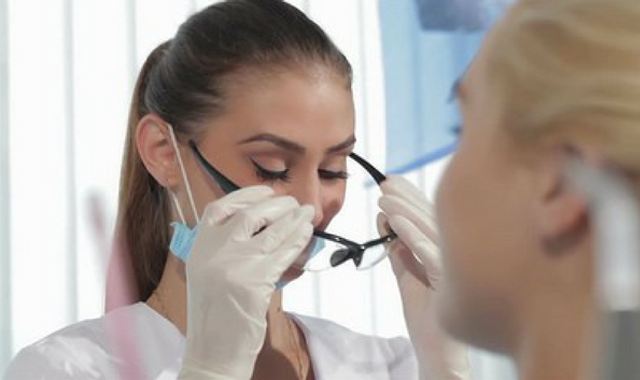How to prepare your dental practice for flu season
Flu season is upon us. That’s the bad news. And while you can’t control when patients walk through your door under the weather, there are some simple things you can do behind the scenes to protect your team and patients from infection. By following the recommended infection control guidelines in these six tips, you can reduce the spread of infectious diseases and maintain a healthy environment.

Flu season is upon us. That’s the bad news. And while you can’t control when patients walk through your door under the weather, there are some simple things you can do behind the scenes to protect your team and patients from infection.
By following the recommended infection control guidelines in the six tips below, you can reduce the spread of infectious diseases and maintain a healthy environment.
Wear maximum filtration masks
Face masks are the first line of defense against airborne pathogens for the mindful dental professional. Of course, even the most effective mask will allow some microorganisms to pass uninhibited, but you can certainly reduce your exposure by choosing a mask with a higher filtration level this time of year. Looking for maximum protection? Pick a mask with a secure fit and high ASTM rating.
Choose the right eyewear
Most dental professionals wear some sort of protective eyewear, whether it’s prescription eyeglasses, safety glasses or even loupes. But not all of these products protect your eyes from sprays, splatters, aerosols or foreign particles. Standard eyewear typically protects you from the front; however, it doesn’t necessarily protect you from germs that enter your periphery. During flu season, try seeking out protective eyewear that provides full-face protection.
Trending article: New germ-killing paint helps stop infection in dental practices, hospitals
Use protective barriers whenever possible
Are you doing everything possible to ensure that your clinical equipment and surfaces are clean and sterile? Make it a habit to properly cover, clean and disinfect areas used during an examination. To further limit contamination, environmental surface barriers should be utilized and swapped out in between cleanings.
When selecting a barrier, the primary feature to look for is impermeability – most products feature labeling to make your choice easy. Plus, commercial surface covers are available in a variety of shapes and sizes, including anything from full-chair sleeves down to disposable covers for your computer keyboards and even your pens. Explore the options and decide which steps are most practical for you. Bonus tip: Be sure to wear special utility gloves when working with instruments in the sterilization center.
Follow rigorous daily sterilization routines
Start by creating a list to identify areas that will need attention. This may include, but is not limited to: dental unit attachments, light handles, radiograph equipment, drawer handles, reusable containers of dental products, computers and bracket tables. These surfaces must be appropriately cleaned and disinfected after each patient visit. Also, did you know that you should use the same brand of cleaning supplies on one surface? Chemical ingredients in brand lines are made to work together, and the “mix and match” strategy can leave you exposed.
Trending article: The importance of battling antimicrobial resistance
Consider appointing – or hiring – an infection control coordinator
Are you 100 percent confident that your practice’s protocols meet current infection control standards? If you hesitated even slightly, then you might want to consider hiring an infection control coordinator, a position that is now recommended by OSAP (Organization for Safety, Asepsis and Prevention). This individual can provide training to your staff and review your infection control policies, as well as maintain related permits and licenses. Accountability helps ensure compliance with safety regulations, and that’s an especially good thing as the flu season rolls around.
If hiring an infection control coordinator doesn’t fit in with your budget, consider purchasing an infection control workbook and empowering a staff member to lead your effort. It’s a cost-effective way to deal with infection control-related issues in the dental office.
Commit to staff and patient education
One final proactive step is to encourage your staff and patients to stay home if they’re sick or infected with the flu or any other ailment. To help your team stay healthy outside the dental office, advise them to wash their hands often, use mouthwash regularly and replace their toothbrush often, along with any additional suggestions you wish to pass along. Educating your patients on these healthy habits is not only beneficial for physical health, it’s good for mental health as well.
When it comes to protecting your patients, staff and practice during flu season, taking the proper infection control precautions is essential. Along with these tips, Patterson offers an array of supplies to help you get started. You can browse products as well as pick up some additional pointers at pattersondental.com/dental/InfectionControl.